Growth tends to cause complexity. The larger we get, the more teams rely on a tool for communication, project tracking, and reporting. Each tool solves a specific challenge when confronted with a unique need, but they also create silos that restrict your ability to see the whole picture.
Employees double update in apps, managers chase visibility in endless reports, and decisions get buried under the noise. Complexity becomes the bolder descriptor of daily work vs. capability.
The answer is unity. When you connect your planning, your communication, your documentation, and your decision-making at the same time, you reduce duplication and create a flow.
The newer, modern project management tools are designed as platforms, not just a project tracker, that connect everything about the work and transform complexity into clarity. Lark exemplifies this through integrated functionality.
Lark Base: Creating structure that scales with growth
One of the greatest aspects of complexity is having project tracking spread across multiple locations. Sales will use one database, marketing will use a separate one, and operations will use spreadsheets. This makes it impossible to align views without wasting time or creating inconsistencies. Lark Base removes this complexity by providing a single location for each team to organize all the data they need in a customizable hub.
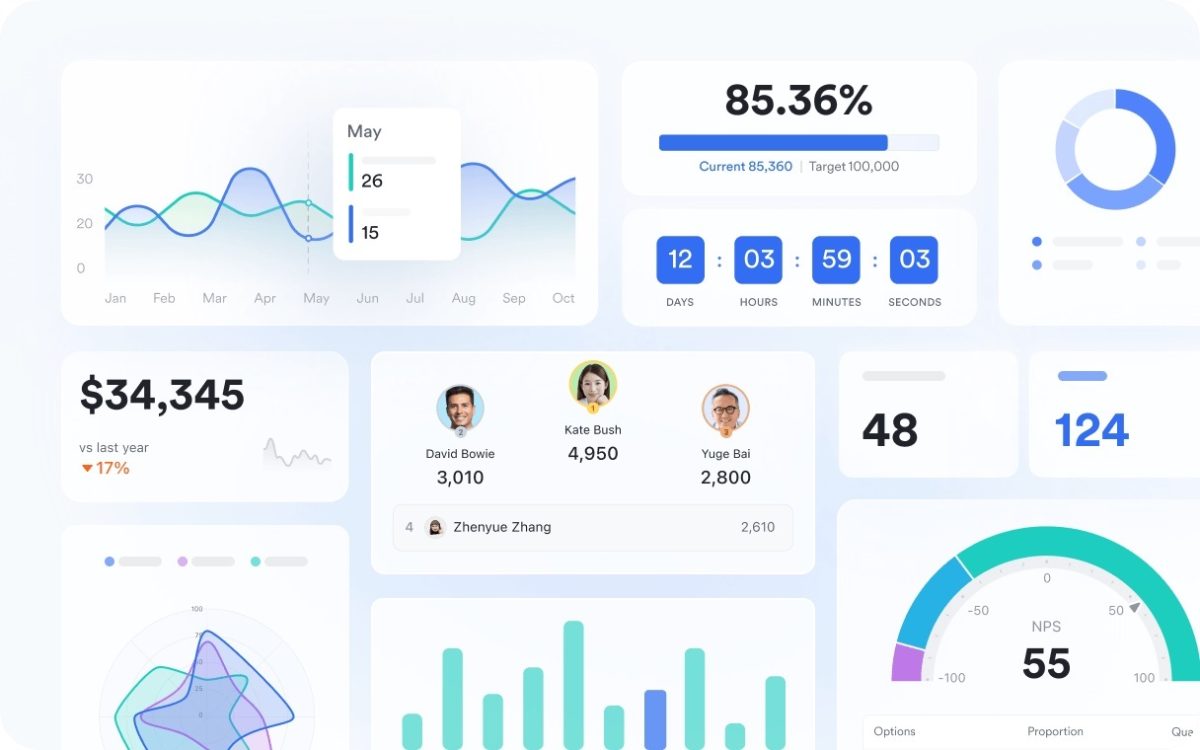
By incorporating multiple advanced features, Lark also supports the workflow of a CRM app, storing client records, deal stages, and follow-up tasks. At the same time, marketing can be tracking campaigns in Kanban view, and HR can be managing onboarding items in a timeline view. Because they are all in the same system, changes are tracked across departments. If a delivery date changes for a client, the operations team sees it in real time and can make adjustments immediately. Rather than working from separate trackers, Base is a single solution that can accommodate everyone’s work, where clarity is automatic.
Lark Calendar: Turning deadlines into shared commitments
When deadlines and schedules are treated as an isolated tool outside of managing the project, the respective team members quickly lose track of what is what and when it is due. Each team member will be managing his or her own personal calendars separately, while project dates are captured elsewhere on a spreadsheet, and reminders may come on unrelated threads or periods apart. It’s easy at this point for the business to miss its commitments.
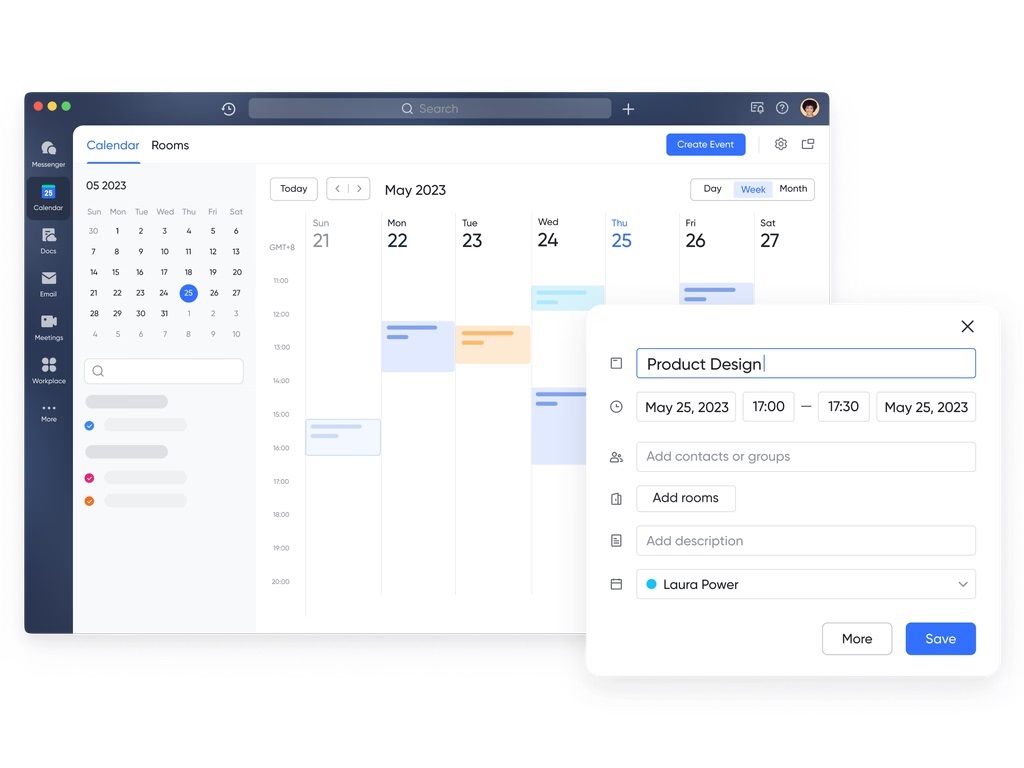
Lark Calendar changes this by integrating the scheduling process across the broader workflow. This way if a milestone is documented in Base, it automatically appears in Calendar. Agenda items and linked documents are attached to the meetings so that team members are prepared. For instance, when there is a product launch cycle, important tasks, such as review meetings or stability dates, are visible to everyone on the team that can require additional supporting documents. Reminders plan to keep everyone aligned and can limit surprises. Calendar makes the fragmented timeframes between team members an even playing field for collective and predictable commitments towards steady project management.
Lark Docs: Making information actionable
Another driver of complexity is knowledge scattered across multiple files and email threads. Teams waste hours reconciling different versions or searching for the latest update. Lark Docs eliminates this problem by providing a living, collaborative space where documents evolve in real time.
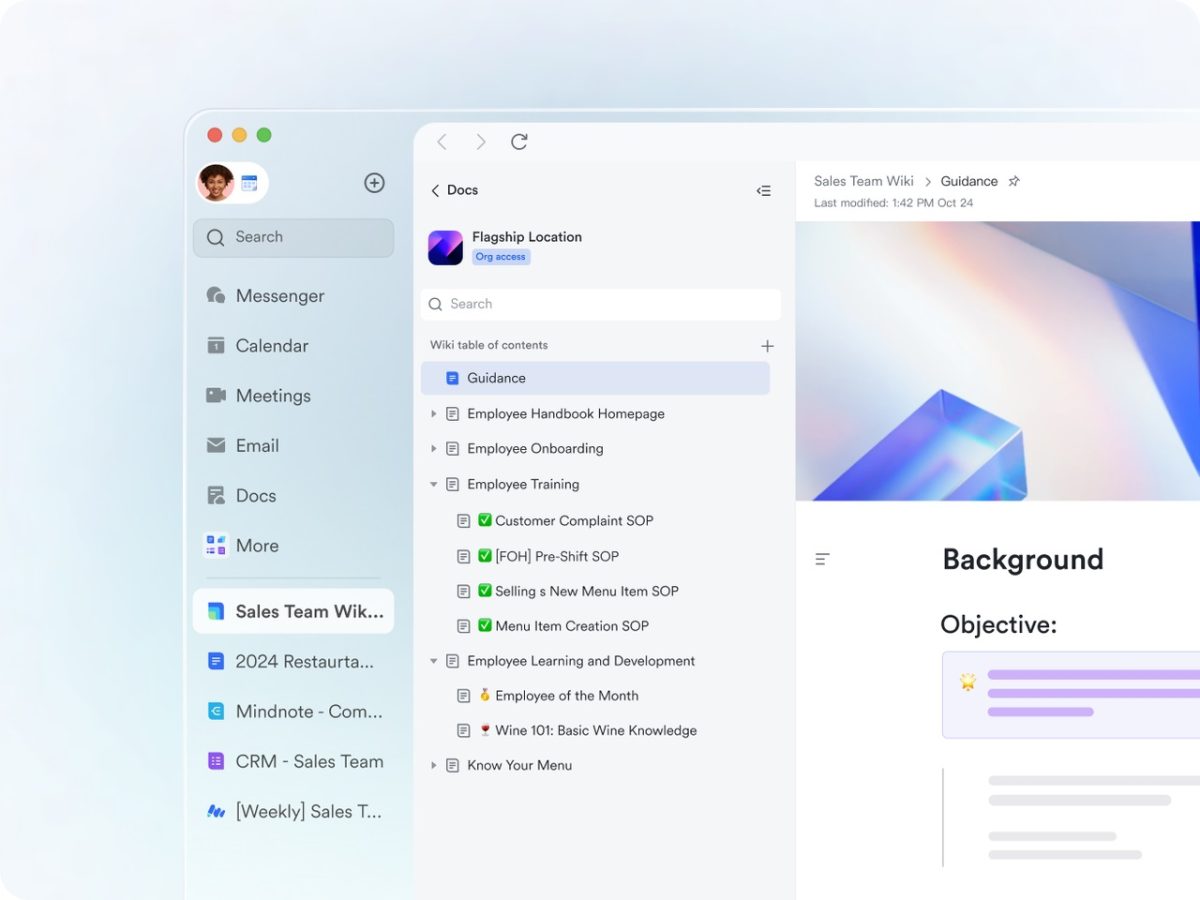
Take a strategy draft for a new market expansion. Instead of sending versions back and forth, the marketing and operations teams co-edit the same document. Comments and mentions ensure input is captured quickly, while embedded charts add context. That same document links to project milestones in Base and review meetings in Calendar. As a result, knowledge doesn’t sit idle, it feeds execution directly. Docs turns information into a dynamic resource that guides action, replacing scattered files with clarity.
Lark Approval: Accelerating decisions with automation
Waiting for approvals can be a pain. Budget requests, contracts, time off—doing things the old way can really bog things down. People have to send tons of reminders, and managers can lose track of what’s waiting for them. Projects can grind to a halt.
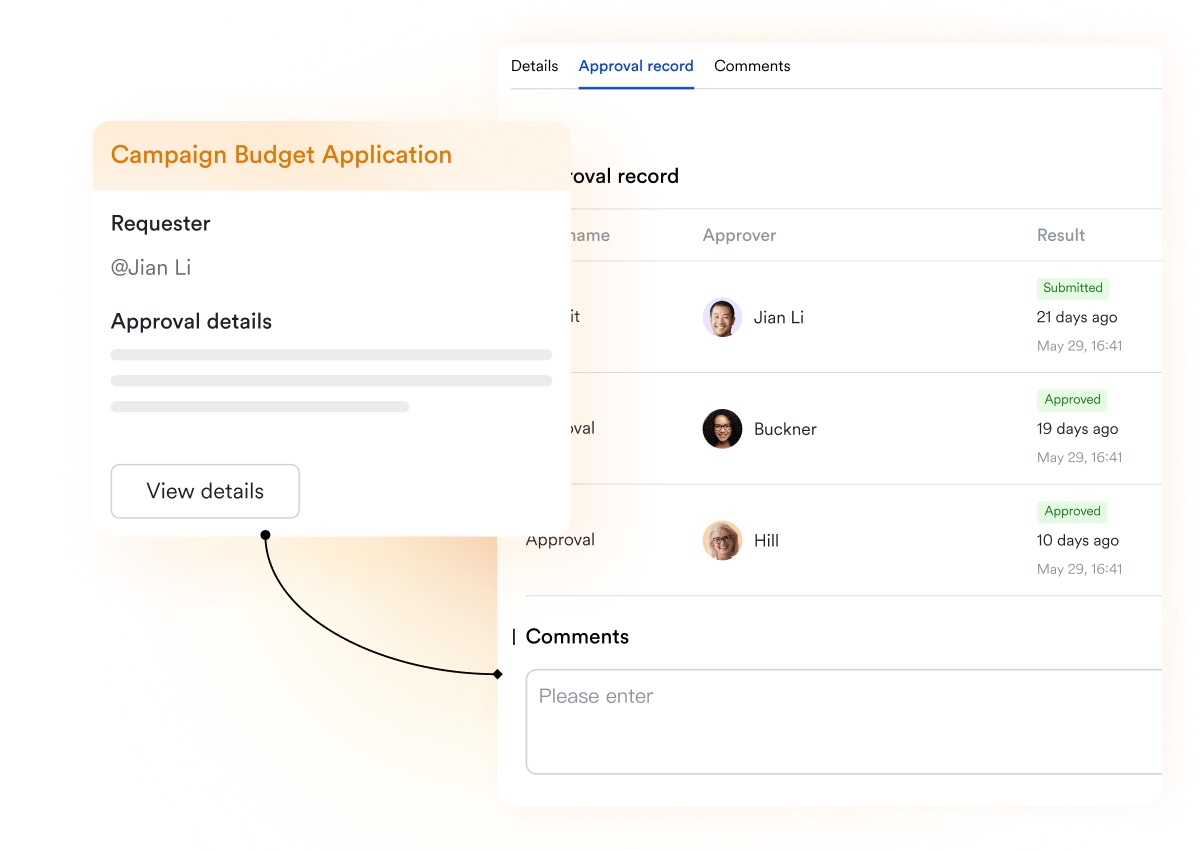
Lark Approval makes things easier with a single spot for decisions. Requests get sent to the correct people right away, and you can always see where things stand. So, if the finance folks want a budget signed off, it goes right to their manager. The manager can check it out and say yes or no without digging through a mountain of emails. Automated workflow, reminders, and follow-ups happen on their own so that approvals don’t get stuck. By putting decisions right into the workflow, Approval turns a messy process into something smooth and quick.
Lark Mail: Bringing external communication into focus
External communication often remains a blind spot in project workflows. Vendor updates or client approvals arrive by email but stay disconnected from internal systems. Employees copy information into trackers manually, adding unnecessary steps and risking errors.
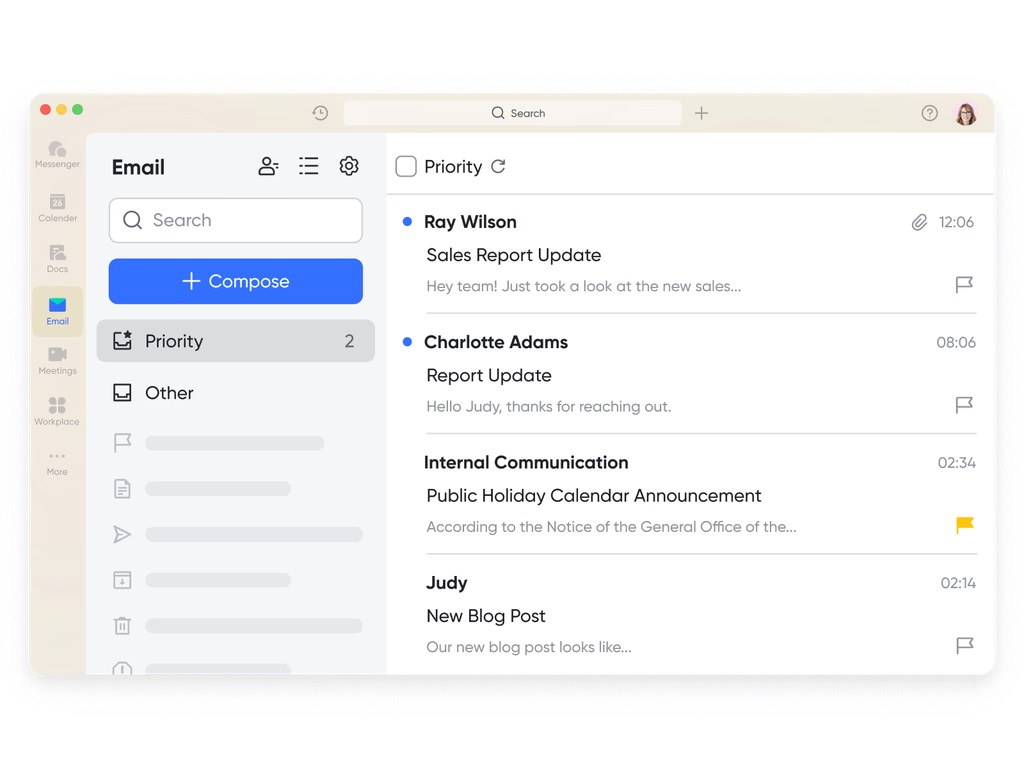
Lark Mail closes this gap by placing email in the same environment where projects and tasks live. A client sends an approval for a proposal. That email can be linked directly to the relevant Base record or turned into a task for follow-up. Imagine a procurement team managing supplier negotiations emails containing contract terms stay connected to project timelines, eliminating the need for duplicate updates. Mail ensures external communication is no longer an isolated channel but part of the broader flow, reducing complexity and giving teams the clarity to act immediately.
Lark Wiki: Preserving knowledge for consistency
Growing businesses often find that knowledge becomes fragmented. Processes are explained in training sessions, policies live in disconnected documents, and employees resort to asking colleagues for answers. This creates redundancy and makes it difficult to maintain consistency across teams.
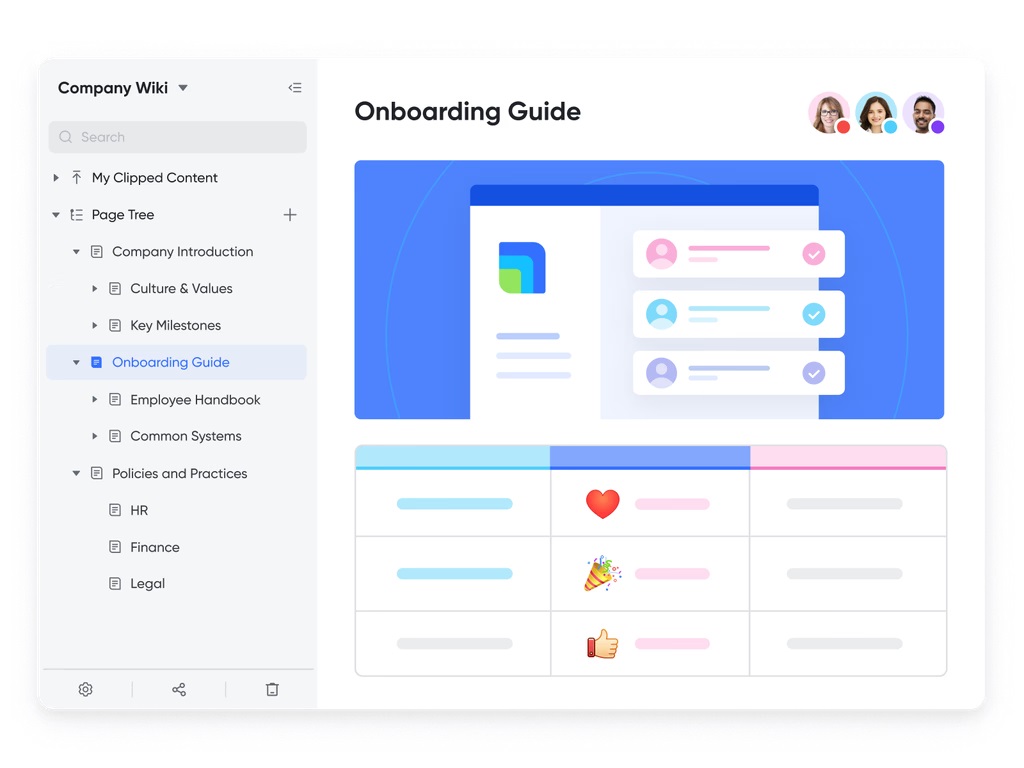
Lark Wiki offers a structured way to preserve and share organizational knowledge. Teams can document workflows, compliance guidelines, or onboarding materials once, and employees can access them at any time. For example, a new hire learning the expense process doesn’t need to ask their manager repeatedly, they consult Wiki, which stores the most current procedures. This eliminates repetitive questions and ensures employees act with confidence. By turning tacit knowledge into a shared resource, Wiki reduces complexity and builds organizational clarity.
Lark OKR: Aligning execution with strategy
Even in cases in which teams are working dynamically and productively, complexity arises if the teams’ works aren’t aligned with organizational goals. Work is happening, but the impact is not significant because priorities are vague. Lark OKR reduces complexity by aligning daily work with longer-range objectives.
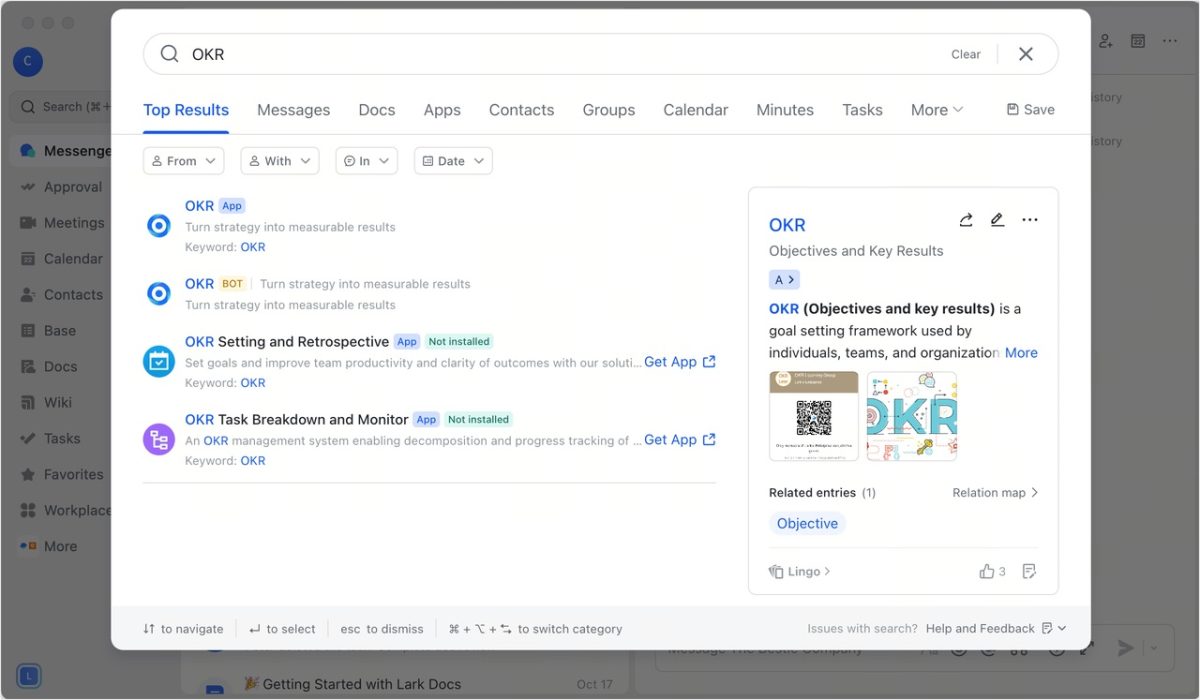
For example, if the company has a goal to increase its customer base by 20%, teams in sales, marketing, and operations can align their projects to that objective. When progress is updated in Base or Tasks, it simply flows into OKR showing leaders if the work is aligned to their objectives. This allows leaders to make clarity of direction and ensures decision making and work activities are focused on outcomes that matter, and also reduces wasted work efforts. OKR provides clarity to eliminate complexity and execute with purpose.
Conclusion
Business complexity is not only about the number of projects, it’s about the disaggregation of tools and information. Disconnected systems cause duplication, delays and confusion. Integrated platforms such as Lark remove fragmentation by tying planning, communication, documentation and decision-making all into one offering.
Base provides a framework for adaptability, Calendar turns deadlines into commitments, Docs create action from knowledge, Approval simplifies decision-making with efficiency, Mail connects users to external communication, Wiki maintains institutional knowledge and OKR aligns strategy. When all of these tools are combined, disconnected systems are overwritten with a flow to give businesses clarity to scale confidently.
Ultimately, the future of efficiency is not to add more tools, but integrate them. Connecting fragmented systems to one roof fosters not only productivity, but clarity that becomes a platform for sustainable growth.







